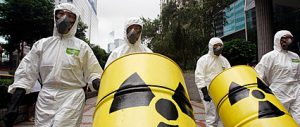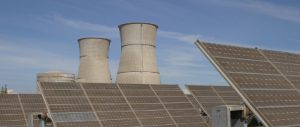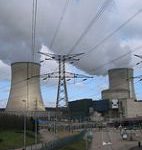This article was originally published by Southern Weekend on July 1, 2010.
Southern Weekend: The recent incident at the Daya Bay power plant involving slight damage to a fuel rod reignited public fears over nuclear power. What does Ministry of Environmental Protection monitoring tell us about the operation of China’s nuclear power plants?
Zhou Shirong: Currently China has six commercial nuclear power plants (Daya Bay, Ling Ao, the three at Taishan and Tianwan) with a total of 11 reactors. Using the International Atomic Energy Agency’s classification of nuclear incidents, none of these – from the start of construction to current operations – has had an incident at level two or above.
That scale has seven levels, with a level zero – an incident with no safety implications – below that. The event at Daya Bay that you mentioned doesn’t even reach level zero, so there is absolutely no need for the public to worry. Events that meet levels one to three are classed as nuclear incidents and four to seven as accidents. A level two incident has no radiological consequences. Even level one incidents are very rare in China.
SW: More nuclear power plants are under construction in China than anywhere else in the world. What challenges does that present for nuclear safety?
ZS: While China has been making consistent advances in nuclear technology, the risks have also been increasing. Primarily, safety design standards in facilities that have been operating for many years are weak and the facilities themselves are ageing; the personnel needed to match the rapid growth in nuclear power are lacking; policies on management of nuclear waste are unclear and investment inadequate; potential radiation sources are numerous and dispersed; and the infrastructure and ability to respond to nuclear and radiological incidents is weak.
Meanwhile, construction of new nuclear plants in China is facing a range of challenges: a dearth of skilled personnel and design ability; incomplete research into nuclear power; insufficient capabilities in the manufacture and installation of nuclear reactors; weak safety oversight; and a lack of public participation.
SW: What is the biggest challenge for the Ministry of Environmental Protection?
ZS: The personnel shortage. In countries with more developed nuclear sectors, there is an average of 35 regulatory personnel to each reactor. The United States has around 4,000 for 104 reactors; both France and Japan have 2,000 for 50-plus reactors. China has 11 reactors in operation and 26 under construction – but only 300 regulatory staff, so there is a lot of pressure there. However, the government has authorised an expansion of the nuclear-safety establishment, increasing that number to 1,000 by 2012.
SW: What about the public’s anti-nuclear sentiment? Where do those fears come from?
ZS: It is really a lack of understanding rather than opposition. And it is mainly brought about by the failure of the operators and the government to provide sufficient information. Some nuclear-power firms just present the advantages and fail to mention any disadvantages, which leads to a lack of public trust. There is also a difference between what people hear in the media and how they actually feel. The public view of nuclear power is still coloured by the atomic bombs used against Japan and the 1986 Chernobyl disaster.
SW: How deep is public understanding of nuclear issues, according to your research?
ZS: There is a significant range, depending on region, employment, university major, level of education, age and gender. A large proportion of people have only a very basic grasp of the issues. Nuclear power accounts for a mere 1.32% of China’s total power-generating capacity, producing less than 2% of our electricity, but some members of the public get scared as soon as they hear it mentioned, because they don’t understand it. In France, where they get almost 80% of their electricity from nuclear energy, public approval ratings are higher than ours – the benefits far outweigh the concerns.
ZS: As far as nuclear safety is concerned, the aim is to build into nuclear-power plants effective mechanisms to prevent radiological damage and avoid harm to workers, the public and the environment. When applying to build a nuclear-power plant, operators have to carry out a public survey as part of the environmental-impact assessment. They have to objectively explain the advantages and problems of the scheme, and how those problems will be addressed; release relevant information to the public, in particular to affected parties; and submit the survey results to the regulator. Ignorance leads to fear, so you need to keep the public informed. That’s the only way to relieve public concerns. This requires the companies, local government, government departments and regulators all to work together.
SW: But even with plenty of communication, there is still a lot of opposition. Why is that?
ZS: There are different degrees of nuclear awareness and different degrees of individual or collective interest in a proposed power plant – and therefore different levels of concern. There is still too little public education on nuclear safety and the vast majority of people know hardly anything about the sector, and so it is hardly surprising if a small number are scared of it. The most important communicator is the operator. It is the greatest beneficiary, so it should take on the greatest responsibility. The National Nuclear Safety Administration is working to increase that communication and we are suggesting that information about nuclear power is included in textbooks so that elementary and middle school students can learn that nuclear is nothing to be scared of. We would also like to see more information in the media.
SW: Are there rules for what kind – or level – of incident, should be made public?
ZS: I certainly think nuclear incidents should be made public. Information about some incidents has been published on our website, but not all; some are still being handled, and some of them are very technical and so the public would not understand, or might even misunderstand. So that’s a challenge – how to make nuclear incidents public without causing people to panic.
At the moment, we do not have a timetable for making all nuclear incidents public. But the Daya Bay case and the radiological incident in Qi country, Henan, show that, in some cases, it is best to ease doubts and fears by letting the public know what is happening early on. But how to demystify nuclear power, how to use accessible language so that the public understand nuclear safety issues and accept nuclear power plants – that is something we are still considering.
Cao Haidong and Meng Dengke are reporters at Southern Weekend.
Homepage image from China Guangdong Nuclear Power Group


